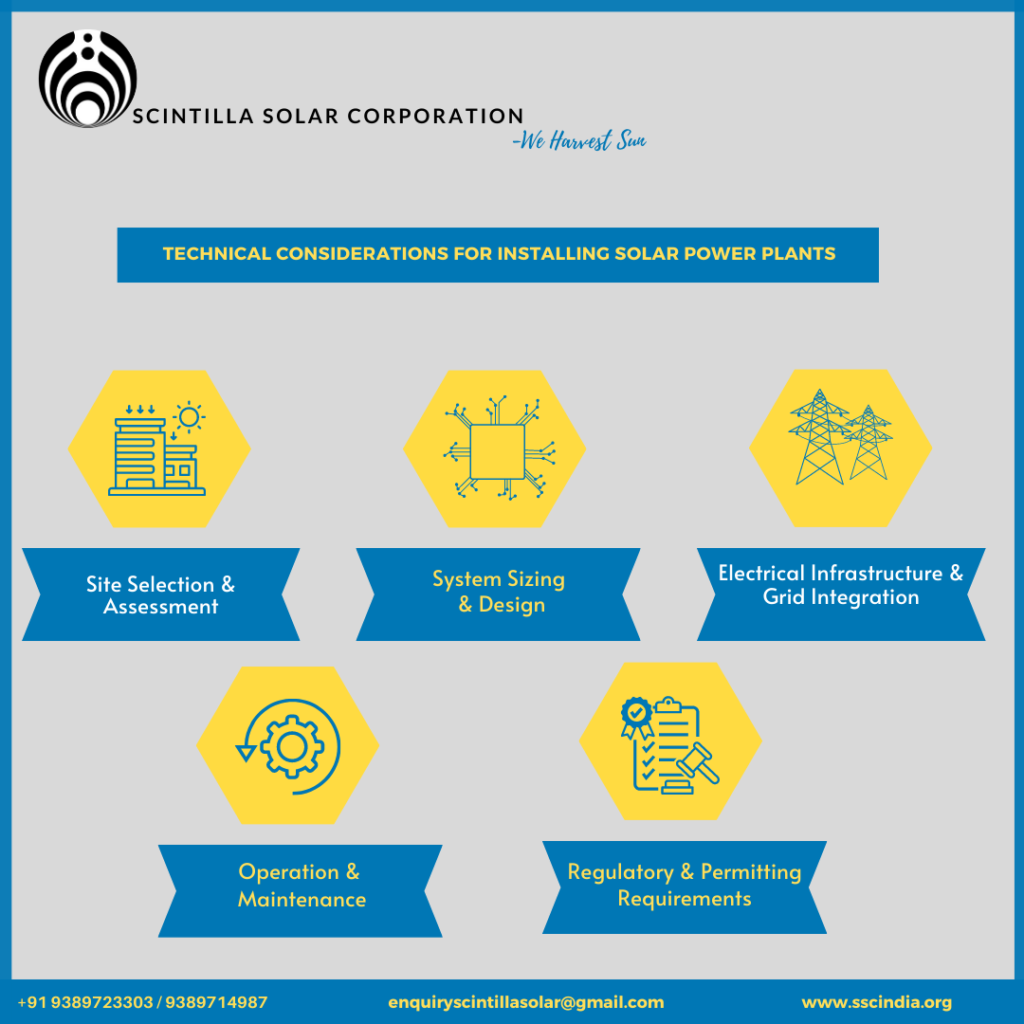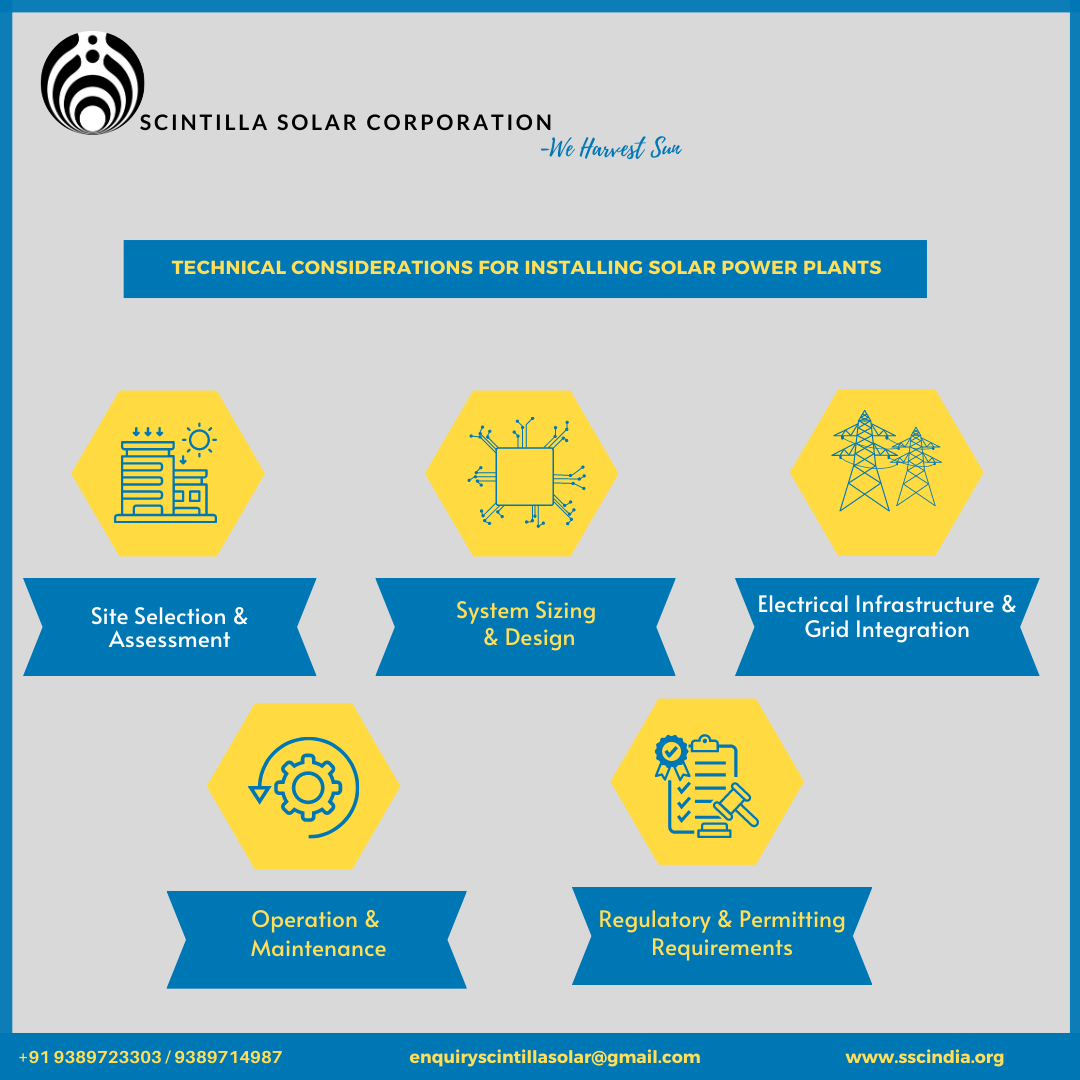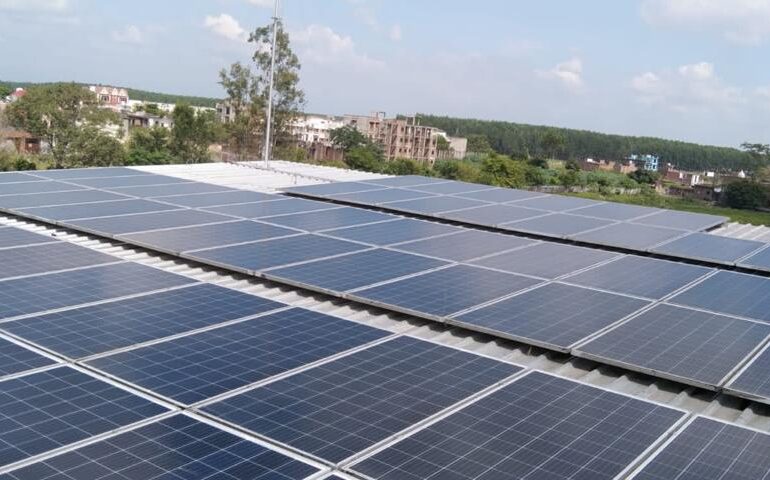
In our pursuit of sustainable and clean energy sources, solar power has emerged as a frontrunner. Solar power plants, also known as solar farms or photovoltaic (PV) power plants, play a vital role in harnessing the abundant energy provided by the sun. However, installing a solar power plant requires careful planning and consideration of various technical aspects to ensure optimal performance and long-term viability. In this blog, we will delve into the key technical considerations that should be taken into account when setting up solar power plants.
Site Selection and Assessment: Choosing the right location for a solar power plant is critical for maximizing energy generation. Factors such as solar irradiation levels, shading, topography, and available land area need to be thoroughly evaluated.
Advanced tools like Geographic Information Systems (GIS) can assist in determining the solar potential of a site, considering variables such as sunlight hours, azimuth, and inclination angles. Additionally, environmental impact assessments should be conducted to identify any potential risks to local flora, fauna, and ecosystems. Adequate measures can then be implemented to minimize the project’s ecological footprint and promote biodiversity conservation.
System Sizing and Design: Proper system sizing is crucial to meet the energy demand and optimize the return on investment. The design should consider factors like the available land area, solar panel efficiency, expected electricity consumption, and future growth projections. Sophisticated software tools can simulate system performance under various conditions, helping to identify the optimal configuration and component selection.
Furthermore, the selection of appropriate solar panel technologies (e.g., monocrystalline, polycrystalline, thin-film) and mounting structures (e.g., fixed tilt, single-axis, dual-axis trackers) is essential to maximize energy production and ensure durability in the local climatic conditions.
Electrical Infrastructure and Grid Integration: Efficient grid integration is a critical aspect of solar power plant installation. A detailed analysis of the existing electrical infrastructure is required to assess the feasibility of connecting the solar power plant to the grid. Factors such as grid capacity, voltage stability, and interconnection requirements need to be considered.
To ensure a smooth integration, power conditioning systems like inverters, transformers, and switchgear must be appropriately sized and designed. Adequate protection measures should be implemented to ensure safe operation, including overvoltage protection, grid synchronization, and fault detection.
Operation and Maintenance: A well-designed operation and maintenance (O&M) plan is essential to optimize the performance and lifespan of a solar power plant. Regular cleaning of solar panels, inspection of electrical connections, and performance monitoring are necessary to identify and address any issues promptly. A robust monitoring system that tracks key performance indicators such as energy production, efficiency, and fault alerts can aid in proactive maintenance and minimize downtime.
Furthermore, a trained workforce or maintenance contract should be in place to handle any repairs or replacements of components, ensuring the long-term reliability and efficiency of the solar power plant.
Regulatory and Permitting Requirements: Complying with local regulatory and permitting requirements is crucial for a successful solar power plant installation. These requirements can vary significantly depending on the jurisdiction and may involve obtaining permits for land use, environmental impact assessments, grid interconnection agreements, and compliance with safety standards.
It is essential to engage with local authorities and stakeholders early in the planning process to navigate the regulatory landscape effectively and obtain the necessary approvals.
Conclusion
Installing solar power plants involves a range of technical considerations that need to be thoroughly evaluated to ensure optimal performance, long-term sustainability, and compliance with regulations. By carefully assessing site suitability, designing efficient systems, integrating with the grid, implementing robust O&M practices, and adhering to regulatory requirements, solar power plants can contribute




